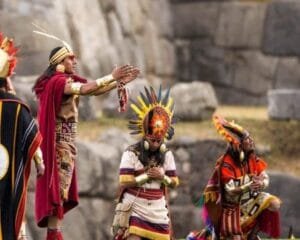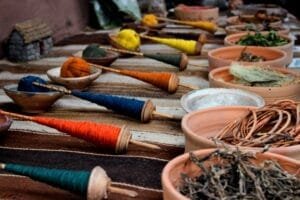The Sacred Valley of the Incas, nestled in the heart of the Peruvian Andes, is a region rich in history, spirituality, and cultural traditions. This fertile valley, once a crucial agricultural center of the Inca Empire, remains a vibrant hub of indigenous culture and Andean customs. Here, we explore some of the most significant rituals and traditions that continue to shape the lives of the local communities, offering a glimpse into the spiritual and cultural heritage of the region.
Pachamama Ceremonies: Honoring the Earth Mother

Central to the spiritual practices of the Andean people is the reverence for Pachamama, or Mother Earth. Pachamama ceremonies, also known as “Pago a la Tierra” (Offering to the Earth), are rituals performed to honor and thank the earth for its bounty and to seek blessings for a good harvest, health, and protection. These ceremonies involve offerings of food, coca leaves, and other sacred items, which are buried in the ground or burned as a sign of respect and gratitude.
Inti Raymi: The Festival of the Sun

Inti Raymi, or the Festival of the Sun, is one of the most important traditional celebrations in the Sacred Valley, honoring Inti, the Inca sun god. This festival, held annually on June 24th during the winter solstice, marks the New Year in the Andean calendar and the return of the sun. The celebration includes music, dance, and elaborate reenactments of ancient rituals, culminating in a grand procession to the Sacsayhuamán fortress near Cusco. Inti Raymi is a vibrant expression of Andean culture and a tribute to the life-giving power of the sun.
Coca Leaf Divination: A Window into the Future

Coca leaves, a sacred plant in Andean culture, are used in various traditional rituals, including divination. Coca leaf reading, or “k’intu,” is an ancient practice where a shaman, or “paq’o,” interprets the patterns formed by a handful of coca leaves to provide guidance and insights into the future. This ritual is often performed during significant life events or to seek advice on important decisions. The coca leaf is also used in offerings and as a means of establishing a connection with the spiritual world.
Wachuma Ceremonies: Spiritual Healing and Insight

Wachuma, also known as San Pedro, is a sacred cactus with psychoactive properties, used in traditional Andean healing ceremonies. These ceremonies are led by shamans and involve consuming a preparation of the cactus to induce visionary states and facilitate spiritual healing and personal insight. Participants often seek out Wachuma ceremonies for guidance, healing, and a deeper connection to the natural world. This practice is deeply rooted in Andean spirituality and emphasizes the interconnectedness of all life.
Textile Weaving: Preserving Ancestral Knowledge

The art of textile weaving is a vital cultural tradition in the Sacred Valley, passed down through generations. Traditional textiles are woven using natural fibers such as alpaca and llama wool and are dyed with natural pigments derived from plants and minerals. The intricate patterns and vibrant colors often tell stories and convey important cultural symbols. Weaving is not only an artistic expression but also a means of preserving ancestral knowledge and cultural identity.
Exploring the Sacred Valley’s Cultural Heritage
The Sacred Valley’s rich tapestry of rituals and traditions offers a unique window into the spiritual and cultural life of the Andean people. Whether participating in a Pachamama ceremony, witnessing the vibrant Inti Raymi festival, or admiring the craftsmanship of traditional textiles, visitors to the Sacred Valley can experience the deep-rooted customs and beliefs that continue to thrive in this mystical land. These cultural practices not only connect the present with the past but also serve as a testament to the resilience and continuity of Andean heritage.

